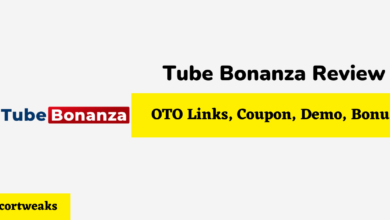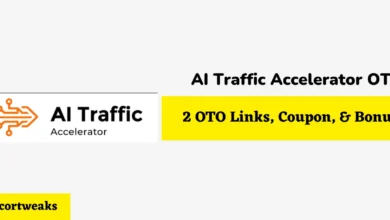Can You use Wii U Pro Controller on Switch?

For Wii U owners, many may have buyer’s remorse, especially considering the fact that many of the best Wii U games have since been re-released on the Nintendo Switch. In addition to that, however, they may also have accessories that have basically no use due to the Wii U itself collecting dust.
One of these is the Wii U Pro Controller, a more traditional controller design meant to serve as a complement to the Wii U GamePad. For those trying to figure out if there’s any point in keeping this controller around, they may ask: can you use the Wii U Pro Controller on Switch?
Can You use Wii U Pro Controller on Switch?
The good news is that, if you do not own or use your Wii U but do not want to get rid of your Wii U Pro Controller, you can still utilize it, thankfully.
The Nintendo Switch is actually compatible with the Wii U Pro Controller, along with many other controllers made by Nintendo. However, if you want to use your Pro Controller, you will have to purchase an adapter to allow it to be able to connect to your Switch.
Use an adapter to plug the Wii U Pro Controller into your Switch’s dock

Thankfully, whether you have a regular Nintendo Switch or a Nintendo Switch OLED, the adapter will function properly. You can purchase any adapter compatible with the Nintendo Switch. Once it arrives, plug it into your Switch dock while holding the button on the side of the adapter. At this point, it will be sending out a signal that your Wii U Pro Controller can interact with.
To get your Wii U Pro Controller connected to the adapter, you just need to hold the sync button on the Pro Controller while the USB adapter is plugged into your Switch. Let go of the button after a couple of seconds, and if it all works out, you should now have a connection between the controller and the console. This would only allow you to use the Wii U Pro Controller while the Switch is docked, however.
Can you connect your Wii U Pro Controller to a Switch without the USB adapter?
The Wii U Pro Controller is capable of being used with a USB cable or through Bluetooth on the Wii U as well as on certain other devices, such as a computer. However, how can you connect it to your Switch using Bluetooth? Unfortunately, while it is possible to connect your Wii U Pro Controller using the above-mentioned adapter method, without using the USB adapter, you cannot connect it to your Nintendo Switch.
No matter how many times you try, the Switch is only capable of recognizing Bluetooth-enabled devices Nintendo wants the Switch to recognize (such as the Joy-Cons and Nintendo Switch Pro Controller). This is one of the reasons why an adapter is required for the Wii U Pro Controller to work. There is no actual reason why the Wii U Pro Controller is not detected by the Nintendo Switch, at least no practical reason anyway. It is a cheaper controller than the Nintendo Switch Pro Controller, though the fact that it is missing features the Switch Pro Controller has may have made Nintendo not want to support it.
Can you use a Wii U Pro Controller with a Nintendo Switch Lite?
Because the adapter method uses the Nintendo Switch dock, you may be wondering if there are any alternative methods to get your Wii U Pro Controller working on a Nintendo Switch Lite. You can actually use an adapter to plug into the charging port on the Switch Lite (which can also be done with the Switch). This allows you to plug a USB cable into the port, and in turn connect the Wii U Pro Controller.
What kinds of Nintendo controllers can be used on the Switch?

There are two methods you can utilize to connect a controller to your Nintendo Switch. The first, and most common, is to connect a device using Bluetooth. This is used for most Nintendo Switch controllers, such as the Joy-Cons and Nintendo Switch Pro Controller, and it is relatively simple to connect these devices. The other method is to connect the controllers directly through USB. The Nintendo Switch Pro Controller is capable of connecting to the Switch using both of these methods.
In terms of Nintendo’s older controllers, there are obvious limitations that prevent them from actually connecting. For example, the NES, SNES, Nintendo 64, and GameCube all have controllers with completely different shapes for their plugs, and none of them are capable of plugging into a USB cord without using an additional accessory. For example, people have been able to use a GameCube controller with their Nintendo Switch by using both official and unofficial adapters.
If you are trying to use a Wii U GamePad, the unfortunate news is that it is not compatible with the Nintendo Switch. It is designed to be used specifically with the Wii U, and the only way it can be used with a Nintendo Switch would require significant hardware modification on both ends, and even then, it would be so limited if it actually worked that it would not be worth the cost, time, and effort to pull that off.
The method used to connect your Wii U Pro Controller is actually capable of connecting more than just the controller. While the GamePad is not able to connect to the Switch, another Wii controller is – namely, the Wii Remote. In turn, this Wii Remote capability allows you to connect accessories that plug into the Wii Remote, such as the Wii Classic Controller and the Wii Nunchuk. However, the Wii Remote’s motion capabilities will not be able to be used, both because Wii games cannot be played on the Switch and because the Wii Remote cannot be used in place of your Joy-Cons.





